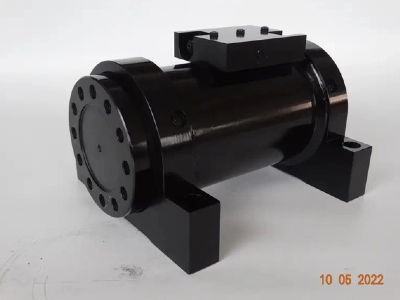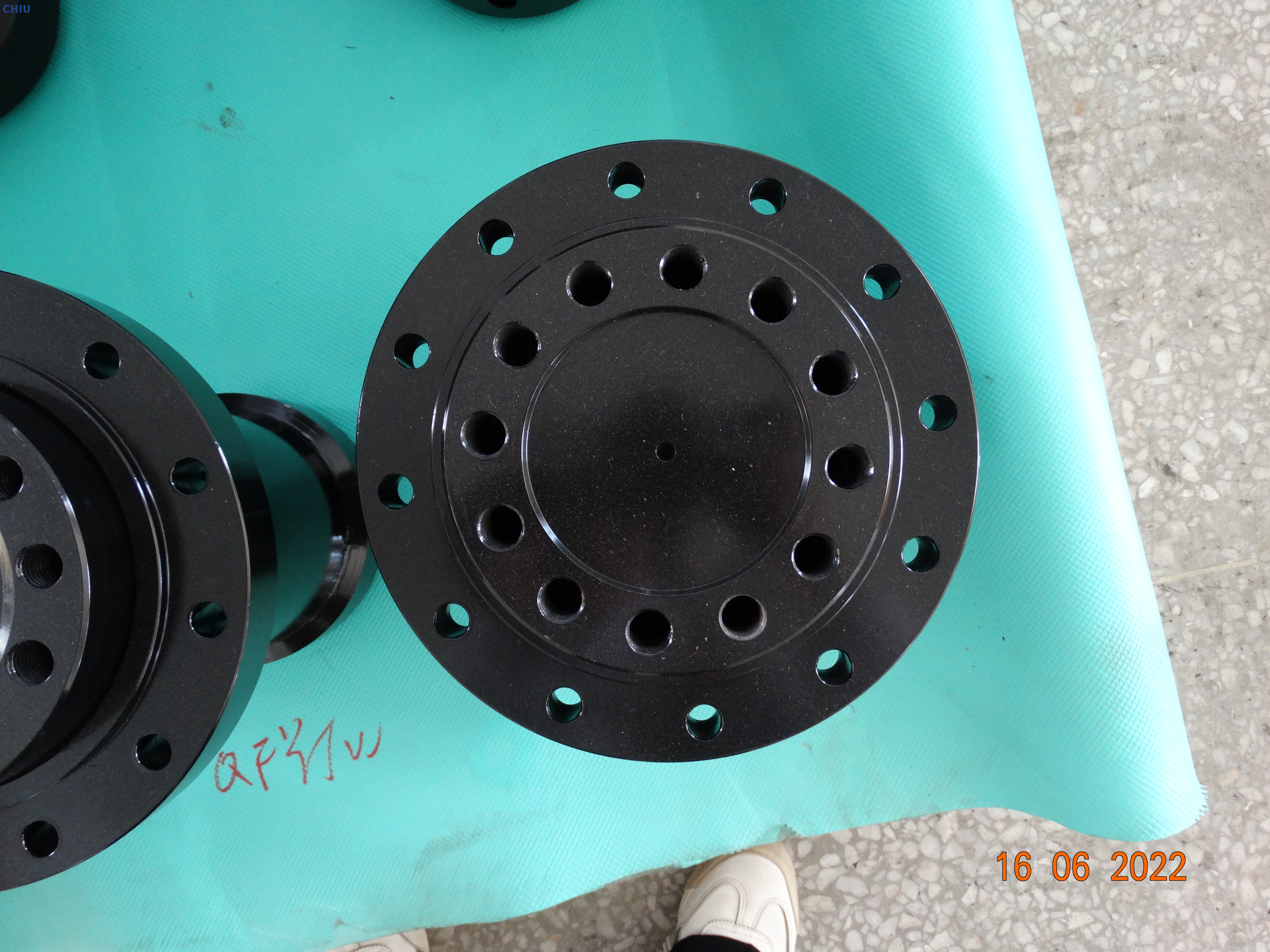- All
- Product Name
- Product Keyword
- Product Model
- Product Summary
- Product Description
- Multi Field Search
Views: 0 Author: Site Editor Publish Time: 2025-07-10 Origin: Site







Offshore operations span a wide array of industries—from oil and gas drilling platforms to Floating Production Storage and Offloading (FPSO) vessels, wind turbines perched hundreds of feet above the ocean surface, and deep-sea mining rigs. These environments expose equipment and personnel to extreme wind, waves, salt spray, temperature fluctuations, and constant movement. In such high-stakes settings, any malfunction can lead to catastrophic safety incidents, environmental disasters, and significant financial losses. Therefore, offshore operators demand equipment that delivers unwavering reliability, precision, and rapid responsiveness.
One of the most vital components meeting these demands is the hydraulic rotary actuator. Unlike electric or pneumatic systems, hydraulic actuators provide unmatched torque density—critical for handling heavy loads—and exhibit excellent performance under variable loads and harsh conditions. When integrated with sophisticated control and feedback systems, hydraulic rotary actuators ensure that every rotation, every pause, and every adjustment happens exactly as intended.
At the core of any precision motion system lies the ability to control position, speed, and force accurately. Hydraulic rotary actuators excel in these areas due to their direct coupling with hydraulic pumps and valves, which enable fine-grained adjustment of fluid flow and pressure. This section explores two critical aspects—linear control of motion and feedback accuracy through integrated sensing—that together form the bedrock of safe offshore operations.
Hydraulic rotary actuators use pressurized oil or fluid to move pistons or vanes within a chamber, converting linear hydraulic pressure into rotary motion. By modulating the valve positions, control systems can adjust flow rates in real time, producing exceptionally smooth acceleration and deceleration profiles. This smooth control reduces mechanical shock and potential stress on structural components—an essential feature when operating on a moving platform subject to wave-induced vibrations.
Proportional and Servo Valves: Modern hydraulic systems employ proportional or servo valves that respond to electronic control signals. These valves can achieve flow control accuracies within ±1-2% of setpoint values, translating into precise rotational speed control for the actuator.
Hydraulic Damping: Internal damping characteristics of hydraulic fluids further smoothen motion, preventing abrupt starts and stops that could destabilize the equipment or endanger personnel.
To guarantee that actuators follow command signals accurately, offshore systems integrate position sensors, torque sensors, and pressure transducers directly into the actuator assembly. Feedback loops continually monitor theseparameters and adjust valve openings or pump displacements accordingly.
Rotary Encoders and Resolvers: High-resolution encoders mounted on actuator shafts provide angular position feedback with precisions often better than ±0.1 degrees—a critical requirement when positioning subsea valves or aligning cranes.
Load and Torque Sensing: Load cells or torque transducers feed back real-time torque readings, enabling the control system to maintain torque within safe limits. This prevents over-torquing or unexpected load spikes that could damage components or injure personnel.
Redundant Sensor Systems: For safety-critical offshore applications, actuators often include dual redundant sensors. Should one sensor fail, the secondary sensor takes over without interrupting operations, meeting stringent offshore safety regulations.
By combining highly responsive hydraulic control with precise feedback loops, hydraulic rotary actuators ensure that each controlled movement—no matter how small—is accurately executed, greatly reducing the risk of operational errors.

In an offshore emergency—whether it’s a helicopter evacuation, sudden equipment failure, or severe weather—life-saving systems must operate flawlessly. Hydraulic rotary actuators are trusted to power and control many of these mission-critical mechanisms.
Offshore platforms are required to maintain immediate-access lifeboats and rescue boats that can deploy at a moment’s notice. Hydraulic actuators control the lowering davits, latches, and release mechanisms.
Controlled Speed: Actuators ensure the boat descends at a constant, safe speed, even when the platform pitches and rolls.
Locking and Release Precision: High-precision actuation prevents accidental release or jamming of lifeboats, critical during crew emergencies.
Material handling operations on offshore rigs rely on cranes and boom arms to move bulky supplies and equipment. Hydraulic rotary actuators manage rotation, extension, and articulation of these cranes.
Load Swing Control: Actuators paired with motion-control algorithms minimize load swing, protecting personnel and equipment.
Micro-Positioning: Precise control allows crane operators to place loads within centimeters of accuracy, essential for transferring loads between vessels or into confined spaces.
Transferring crew or sensitive equipment between vessels or from vessel to platform is fraught with risk. Hydraulic actuators control gangway tilt and rotation, ensuring stable, tilt-compensated movement that adapts to changing vessel motions.
Anti-Heeling Compensation: Actuators integrate with dynamic positioning systems to automatically adjust platform angles in real time, ensuring safe transfer even in rough seas.
Each of these applications demonstrates how precise control of rotational movement by hydraulic actuators underpins offshore safety protocols, enabling critical operations to proceed smoothly under challenging conditions.
Beyond emergency systems, everyday load handling tasks on offshore facilities demand actuators capable of rapid response and stable torque output.
Hydraulic systems can respond in milliseconds to changes in control signals, thanks to direct flow paths and minimal mechanical lash. This rapid responsiveness is vital for:
Dynamic Load Balancing: In subsea riser systems and turret mooring, quick actuator adjustments maintain stability as external forces shift.
Shock Absorption: Fast-acting actuators absorb sudden load changes—such as wave slams—protecting both structure and crew.
Offshore load handling can change rapidly—an unexpected wave might alter the weight distribution on a crane load. Hydraulic rotary actuators maintain steady torque, preventing jerky or uncontrolled movements.
Proportional Torque Control: Advanced hydraulics allow actuators to regulate torque output in direct proportion to control signals, ensuring smooth load transitions.
Anti-Cavitation Design: High-quality actuators incorporate anti-cavitation features to avoid performance dips when fluid pressure momentarily falls, safeguarding continuous stable operation.
By delivering instantaneous and stable torque adjustments, hydraulic actuators safeguard equipment integrity and operator safety during both routine and emergency load movements.

Offshore platforms routinely handle flammable hydrocarbons under high pressure. Consequently, all hydraulic equipment must comply with rigorous safety standards—such as ATEX in Europe, IECEx internationally, and NEC/CEC in North America—to prevent fires or explosions.
Actuator housings and internal components are crafted from marine-grade stainless steel or corrosion-resistant alloys, often with specialized coatings. Sealing solutions include:
Dynamic Lip Seals and O-Rings: Engineered to maintain pressure integrity under pressure fluctuations and motion.
Metal-to-Metal Sealing: Used in critical zones to prevent catastrophic fluid leaks.
These measures prevent saltwater ingress and hydraulic fluid escape, extending service life and reducing environmental risks.
For equipment installed in hazardous zones (Zones 0, 1, or 2), hydraulic actuators are designed to be intrinsically safe:
Non-Electrical Actuation: Pure hydraulic actuation eliminates electrical spark risks.
Grounding and Bonding: Metallic housings are grounded to avoid static charge accumulation.
Combined with explosion-proof valve packages and enclosed hydraulic units, these features ensure that hydraulic actuators do not become ignition sources.
Floating Production Storage and Offloading (FPSO) vessels function as production facilities and temporary storage for crude oil. These vessels rotate to align with catenary mooring lines and must adjust rotation based on wind, current, and wave forces.
Turret Rotation Control: Twin hydraulic rotary actuators manage the turret’s yaw movement, enabling the FPSO to rotate smoothly while maintaining riser alignment.
Mooring Tension Adjustment: Actuators fine-tune mooring line tensions to compensate for dynamic loading, ensuring that the vessel remains stable and secure.
Valve and Choke Operations: Subsea and topside valves controlling fluid flow into the FPSO are operated by compact rotary actuators, guaranteeing rapid and reliable shutoff during emergency shutdowns.
By integrating precision control, robust sealing, and rapid responsiveness, hydraulic actuators in FPSO applications have demonstrated over a decade of reliable service, even in ultra-deepwater fields where maintenance windows are limited and risk tolerance is minimal.
In offshore environments—where safety, reliability, and operational efficiency are non-negotiable—hydraulic rotary actuators deliver the control precision and durability essential for mission-critical tasks. From life-saving lifeboat deployments to turret rotation on FPSOs, their combination of rapid responsiveness, stable torque delivery, advanced feedback systems, and explosion-proof designs underpins safer, more efficient offshore operations.
As the industry continues to push into harsher, deeper, and more complex offshore fields, the demand for high-performance hydraulic actuators will only grow. Choosing a trusted supplier such as Changsha Chiyu Hydraulic Equipment Co., Ltd., with proven expertise in custom actuator solutions and rigorous quality standards, ensures that your offshore equipment stands ready to meet tomorrow’s challenges.
To explore Chiyu’s range of precision hydraulic rotary actuators and discuss tailored solutions for your offshore projects, visit www.chiyu-hydraulics.com or contact their engineering team directly.